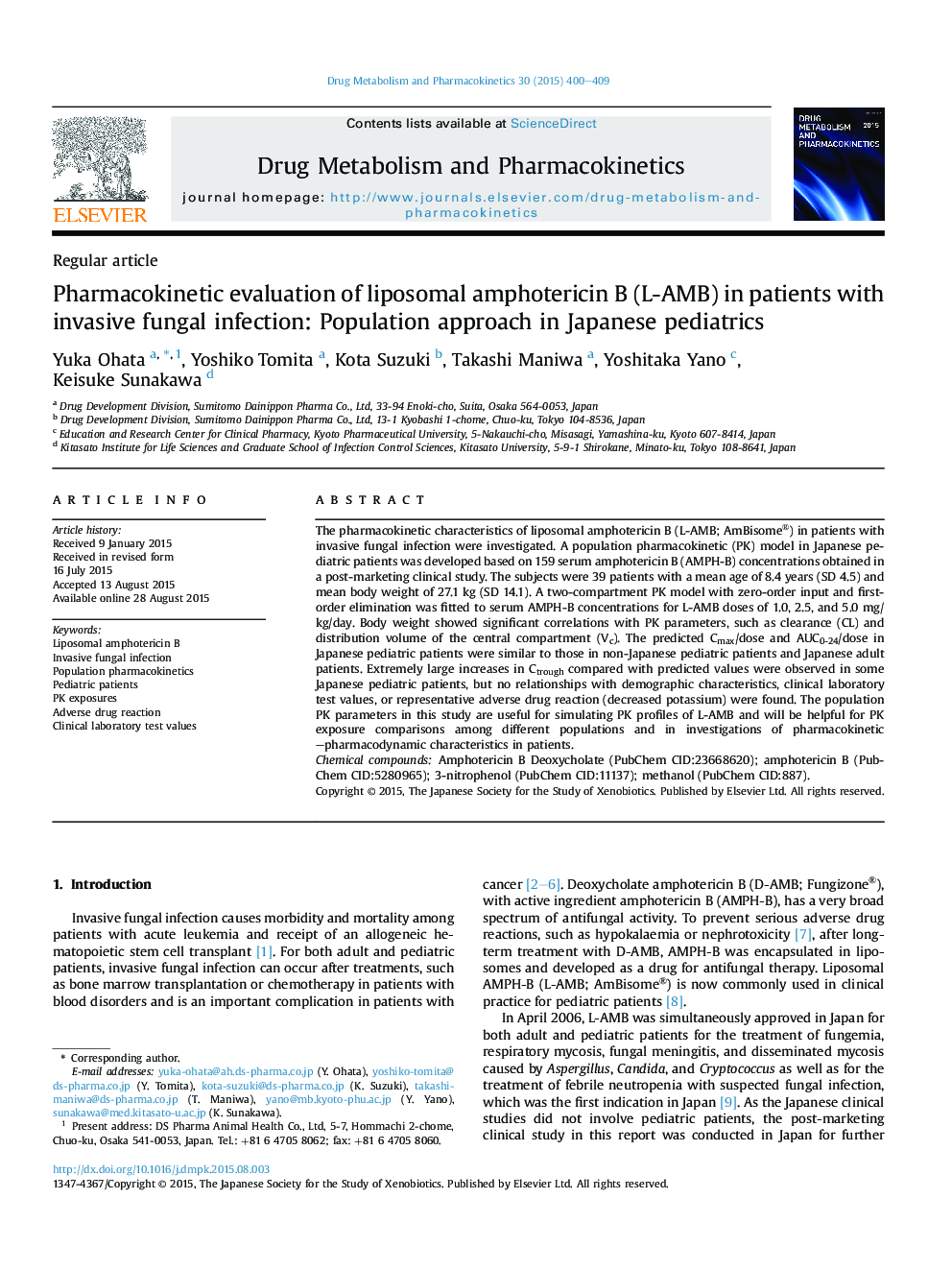| Article ID | Journal | Published Year | Pages | File Type |
|---|---|---|---|---|
| 2478749 | Drug Metabolism and Pharmacokinetics | 2015 | 10 Pages |
The pharmacokinetic characteristics of liposomal amphotericin B (L-AMB; AmBisome®) in patients with invasive fungal infection were investigated. A population pharmacokinetic (PK) model in Japanese pediatric patients was developed based on 159 serum amphotericin B (AMPH-B) concentrations obtained in a post-marketing clinical study. The subjects were 39 patients with a mean age of 8.4 years (SD 4.5) and mean body weight of 27.1 kg (SD 14.1). A two-compartment PK model with zero-order input and first-order elimination was fitted to serum AMPH-B concentrations for L-AMB doses of 1.0, 2.5, and 5.0 mg/kg/day. Body weight showed significant correlations with PK parameters, such as clearance (CL) and distribution volume of the central compartment (Vc). The predicted Cmax/dose and AUC0-24/dose in Japanese pediatric patients were similar to those in non-Japanese pediatric patients and Japanese adult patients. Extremely large increases in Ctrough compared with predicted values were observed in some Japanese pediatric patients, but no relationships with demographic characteristics, clinical laboratory test values, or representative adverse drug reaction (decreased potassium) were found. The population PK parameters in this study are useful for simulating PK profiles of L-AMB and will be helpful for PK exposure comparisons among different populations and in investigations of pharmacokinetic–pharmacodynamic characteristics in patients.Chemical compoundsAmphotericin B Deoxycholate (PubChem CID:23668620); amphotericin B (PubChem CID:5280965); 3-nitrophenol (PubChem CID:11137); methanol (PubChem CID:887).
Graphical abstractFigure optionsDownload full-size imageDownload as PowerPoint slide
